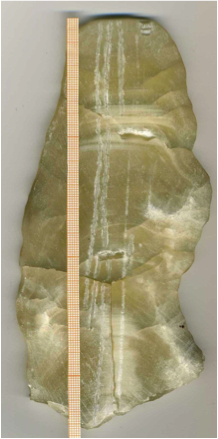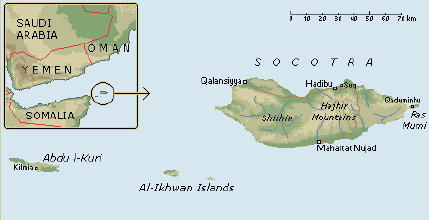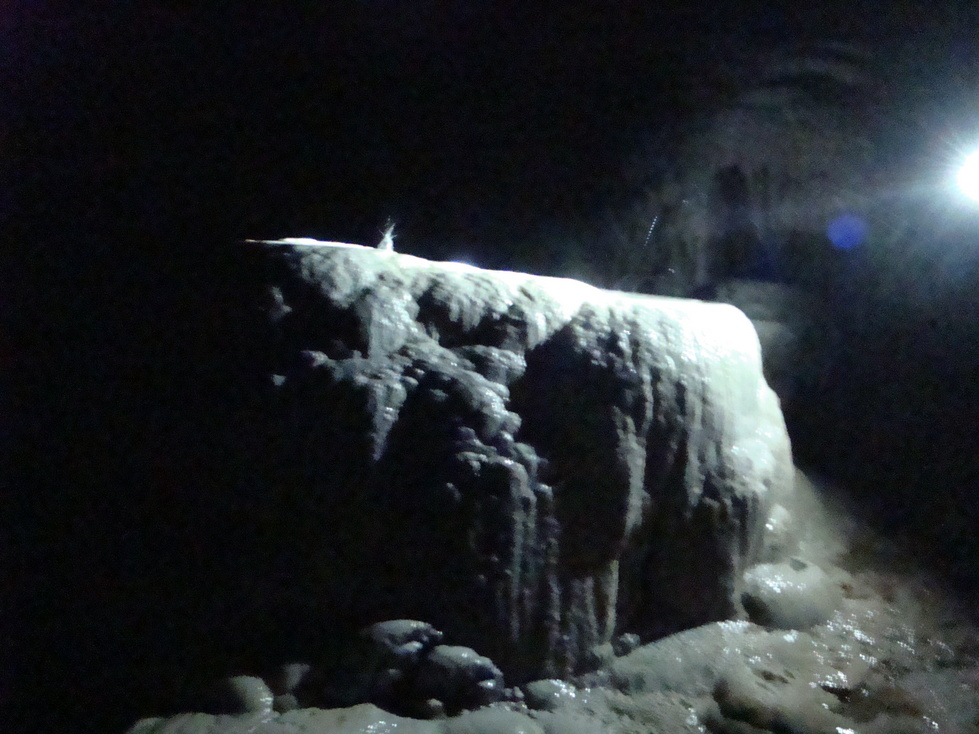Research
PhD Project
Holocene high-resolution speleothem record from a Belgian stalagmite
Holocene high-resolution speleothem record from a Belgian stalagmite
During my master thesis I specialized in geochemical research on stalagmites with focus on terrestrial climate reconstructions. By measuring geochemical proxies (stable isotopes and trace elements) and annual band thickness in Uranium-series dated stalagmites, monthly- to decadal-resolved time series can be developped. During my PhD I will mainly focus on the study of a Belgian stalagmite to improve our understanding of how proxies reflect climate conditions at high resolution. These results will improve our knowledge of the Holocene Western European climate. If possible other localities will be studied such as the caves of Socotra, offshore Yemen, where I did my master thesis in 2007.
Master Thesis Project
A Holocene paleoenvironmental reconstruction based on geochemical research (isotopes and trace elements) on a speleothem of Socotra Island (Yemen).
A Holocene paleoenvironmental reconstruction based on geochemical research (isotopes and trace elements) on a speleothem of Socotra Island (Yemen).
Due to the Global Warming hypothesis (IPCC, 2007) the study of the palaeoclimate and its evolution in the recent past receives more and more attention. Climatic variations are studied by means of proxy data. These are measurable data from biological, glaciological or geological archives. The most commonly used terrestrial geological archives are lake sediments, ice cores and speleothems. Speleothems, especially stalagmites, are interesting archives of past climates because they have a stable mineralogy, can contain different proxy data over long time periods that can be analysed with very high resolution and allow absolute dating of the time series. Certain geographical areas that play a key role in the elaboration of Global Circulation Models (GCM) have still been insufficiently studied.
Such is the case for the area of the northwesthern Indian Ocean, eastern North-Africa and the Middle-East. The arid tropical island of Socotra lies in this area. Stalagmite STM 6 from Socotra Island, Yemen in the northwest Indian Ocean, provides a palaeoclimate record from ~ 4.6 ka until the present based on 3 U/Th-measurements. In order to make a reconstruction of the palaeoenvironment, stable isotope ratios of carbon and oxygen (δ13C and δ18O) and Mg/Ca and Sr/Ca ratios were analysed at both high and low resolution. Heavy metals such as Pb, Cd and Cu were analysed to study the effect of antropogenic pollution resulting from industrialisation. U-concentrations were also analysed. Finally, the results of stalagmite STM 6 were compared with these of stalagmite STM 1 from the same cave, and with stalagmite STM 5 from a different cave.


Picture of STM6
Based on the strong correlation between δ13C and δ18O in the time series in STM 6, the variations of the isotope ratios are interpreted to be driven primarily by changes in the amount of meteoric precipitation, which are supposed to be related to changes in the position of the intertropical convergence zone. The low resolution δ13C and δ18O time series reveal the occurrence of 3 wet periods ranging from before 4.6 to 4.5 ka, from 4.2 to 3.5 ka and from 2.7 to 0.5 ka. The Medieval Warm Period (~1000-700 a BP) shows an evolution to drier conditions and The Little Ice Age (~570-150 a BP) was a relatively dry period. These climatic conditions during the MWP and the LIA are different from those found in eastern North Africa. The high resolution stable isotope analysis covers the period from ca 4.2- 3.2 ka and the results show a good similarity with the low resolution results. It was not possible to draw relevant conclusions from the high resolution time series of the Mg/Ca or Sr/Ca ratios, neither from that of the Pb, Cd and Cu concentrations. The low resolution Mg/Ca and Sr/Ca time series show an overall evolution to drier conditions. No correlation with the stable isotopic signals was noticed. The geochemical analysis shows an increase of U-concentration at the end of wetter periods and an increase of Cd-concentration at the beginning of wetter periods. An increase of the Pb- and Cu–concentration is only visible in the most recent wet period. Finally it can be observed that the isotopic record of STM 6 is very similar to those of STM 5 and STM 1, indicating the high reproducibility of the record.
"For paleoclimate, the past two decades have been the age of the ice core. The next two may be the age of the speleothem".
This statement by Gideon Henderson (Science, 2006) suggests that speleothems have the potential to provide ice core-like records of past climatic and environmental changes. To refine and calibrate climate models used for climate predictions, there is still a lack of absolutely dated information on past temperatures and precipitation amounts. Most popular terrestrial paleoclimatic archives such as ice cores, tree-trings and lake sediments fail to deliver this type of information as they each have their weaknesses. Ice cores are limited to polar regions and need calibration of the 14C-ages, tree-rings cover only short time periods and lake sediments lack dating accuracy and temporal resolution. Speleothems, such as stalactites and stalagmites, can provide this essential information since they grow over long time periods, contain different climate proxies at a high resolution and allow absolute U/Th-dating of time series. Of particular interest is the isotopic and geochemical composition of speleothems. Oxygen and carbon isotopes can be studied to quantify respectively temperature and vegetation changes above the cave. Mg and Sr contents may register temperature changes and/or changes in amount of rainfall and thus recharge of the aquifer. However, research on speleothems is still in its infancy, particularly if compared to other climate archives, such as trees or lake sediments. The exact environmental and climatic controls on the geochemical and isotopic composition of speleothems, i.e. transfer function, has still not fully been explored.
During this PhD study I will analyse a Belgian speleothem called the Proserpine stalagmite from the "Grottes-de-Han" caves at Han-sur-Lesse (Belgium). A detailed study on monthly- to decadal time scale over the last 2000 years from the proxies stored in the stalagmite will improve our knowledge of the transfer functions between the climate proxies and the climate parameters above the cave. This will also contribute to a better understanding of the evolution of the Belgian environment over the past 2000 years and will help refining the climate models. Stable isotopes of oxygen and carbon, geochemistry (Mg/Ca- and Sr/Ca-ratios), grayscale, crystallography and band thickness of the Proserpine stalagmite will be studied. Embedded in a temporal framework through U/Th-dating, the obtained time series will be compared with both instrumental and historical data and with data from other studies. Heavy metal concentrations such as Cu, Cd, Pb and Zn measured with HR-ICP-MS through the stalagmite, will show the effects of anthropogenic pollution on the Belgian environment. Cave temperature and humidity, cave air pCO2, pH, isotopic and chemical composition of the rainwater and seepage water, host rock and recent calcite will be measured in order to find the key to the interpretation of the speleothem time-series
